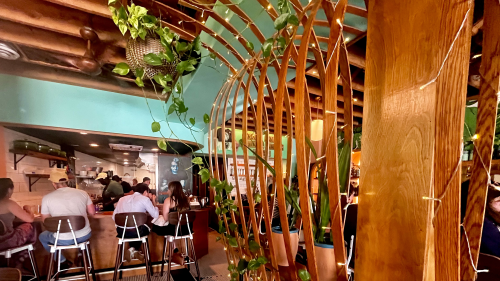One of Madison’s historic landmarks — the UW-Madison Arboretum — offers 20 miles of hiking trails, three miles of bikeable roads, and ten miles of snowshoe opportunities. But there’s so much more to explore deep within the deciduous forests, so herb your enthusiasm as we head into the thick of it.
🌳 How the arboretum came to be
The origins of the Arboretum date back to John Nolen’s 1911 paper Madison: A Model City. In 1932, the first 246 acres were acquired by the UW Board of Regents with some help from Michael Olbrich.
Pioneering the concept of ecological restoration, the 1930s + 1940s saw gifts and purchases of land that were developed by the Civilian Conservation Corps — a Great Depression program.
🌳 What makes up the arboretum
Today’s arboretum is home to five different environments — wetlands, prairies, savannas, deciduous forests, and conifer forests — all within its 1,200 acres. The title also encompasses 513 acres in outlying properties, all for the purpose of teaching and research.
Wetlands: 400 acres of the arboretum is home to the Teal Pond Wetlands and the Gardner Marsh. Due to urban stormwater runoff, research and land management are crucial to keeping biodiversity in the areas.
Prairies and Savannas: Over 300 native wildflowers + grasses bloom in the Greene Prairie, Curtis Prairie (the world’s oldest restored prairie), Southwest Grady Oak Savanna, and Wingra Oak Savanna. The continuing restoration of the historical Wisconsin landscape requires controlled fires to keep woody species from ruining diversity.
Deciduous Forests: Developed by trees that lose their leaves in the fall, oak woods, sugar maples, beech, and birch trees create closed-canopies in the Noe, Gallistel, and Wingra Woods. Southern Wisconsin soil and climate are partial to these environments.
Conifer Forest: The creation communities — as pines are not native to southern Wisconsin — were planted soon after the founding. Evjue Pines + Aldo Leopold Memorial Forest are populated by red and white pines that are monitored for invasive species like garlic mustard and Asian bittersweet. The Lost City forest is mixed woodlands with a bit of concrete.
Gardens: The arboretum is home to three garden collections — Longenecker Horticulture Gardens (one of the largest displays of lilacs in North America), Viburnum Garden, and Wisconsin Native Plant Garden. Representing thousands of native plants, the spaces are designed for both learning and enjoyment.
🌳 How to get involved
Taking a self-guided stroll is one way to explore on your own terms. Some of the most popular routes include the Grady Tract Loop, the Curtis Prarie, or a five mile loop through the whole arboretum. Always remember to stay on the paths to preserve wild plants + wear appropriate shoes.
You can also try one of the free guided nature walks offered for different skill levels and ages on a weekly basis. Most meet at the Visitor’s Center, located right in the heart of the Arboretum.
- Nature Walks — Every Sunday at 1 p.m., learn about the land, plants, and animals from local naturalists.
- Nature Hikes — On the first and third Sundays of the month, adults are invited on these longer walks.
- Family Nature Walks — On the second Sunday of the month, families can explore the arboretum with a guide.
- Garden Strolls — On the fourth Sunday of the month, gently-paced strolls are offered with wheelchair-accessible routes.
And the fun doesn’t stop there. Check out the calendar for monthly night walks, seasonal birding hikes + more family-friendly events.
The arboretum is open daily from 4 a.m.-10 p.m. and is always free.












